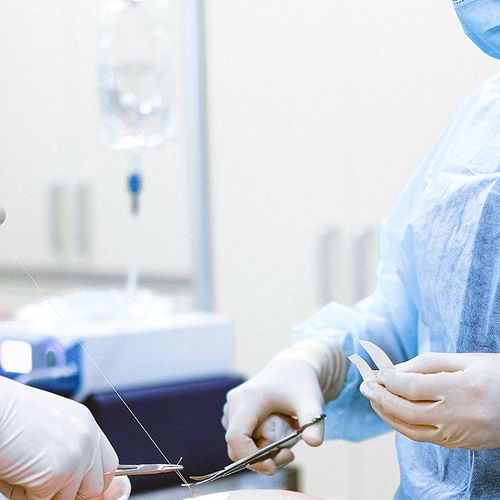Anyone who has set foot in a hospital lately knows how busy doctors and nurses are. That's why it's critical for patients to understand and to monitor—their own care.
Some commonly overlooked ways to ensure a successful surgery…
- Supply good records. List all of your current medications, with the dosages you take. Also list all vitamins and herbal remedies you consume, any allergies or other conditions you have and emergency contact phone numbers for both doctors and family members.
If you have an implantable cardioverter defibrillator, list the brand, model number and when the battery was last changed.
If you wear a pacemaker, make copies of your pacemaker card. Issued by the manufacturer of your pacemaker, it lists the make and model of your device, battery life, a telephone number for questions and other essential information.
Copy all this data, and give it to your primary-care doctor, your surgeon and any other doctor who treats you. Also ask that it be stapled to the front of your chart.
Smart idea: Keep an extra copy in your wallet or purse, so it can be accessed easily if you ever wind up in an emergency room.
- Ask for local anesthetic before getting an intravenous (IV) line or blood test. Routine procedures, such as starting IV lines, need not be painful, but almost all hospitals fail to administer a small amount of lidocaine with a tiny needle to patients who are especially sensitive to the discomfort. Allergies to lidocaine are exceedingly rare, so it makes no sense not to numb the skin.
During your surgical consultation, ask what the hospital policy is regarding lidocaine. Sometimes, the nurses have not been trained in this pain-control technique.
If this occurs—or you're concerned about having a lidocaine allergy—ask for a prescription for EMLA (eutectic mixture of local anesthetic), a topical anesthetic. One hour before your operation, rub a pea-sized dab on the inside crooks of both arms and on the tops of both hands. It takes about one hour for EMLA to work.
Caution: Do not use EMLA on open cuts.
- Insist on paper or plastic surgical tape to secure bandages and IV lines. All hospitals carry paper or plastic hypoallergenic tape, which is much gentler on skin than the silk tape that is usually used. You probably won't get it unless you ask for it.
- Inform your anesthesiologist if you sleep with two pillows. This habit could be a sign of...
- Sleep apnea (a disorder in which breathing is temporarily interrupted during sleep). If you suffer from this condition, your tongue or the soft tissues of your throat can fall against the back of your airway and obstruct your ability to breathe during anesthesia.
In this case, your anesthesiologist might alter the method of anesthesia by performing a semi-awake intubation, in which a patient is sedated but awake so his/her swallowing and breathing reflexes are working.
- Acid reflux (a condition that allows stomach acid and enzymes to flow backward from the stomach into the esophagus). If you have acid reflux, your airway may not have robust impulses (the ability to swallow and breathe) to protect itself from stomach contents.
To prevent the stomach contents from entering the lungs, a breathing tube that delivers anesthesia and protects the airway might be preferable to an anesthesia mask.
- Ask about having your brain waves monitored while under anesthesia. Most people have heard horror stories about surgical patients who remain "awake" during anesthesia. Researchers estimate that this occurs once in every 1,000 people who are undergoing anesthesia.
By monitoring a system called the bispectral index (a measure of brain-wave activity), doctors can provide an extra level of comfort for patients who are going in for long, difficult surgeries and may have anxiety about being aware during their operation.
- Make sure your anesthesia team has the drug dantrolene on hand before your surgery. This is especially important if you are having surgery in an outpatient center or a doctor's office.
Malignant hyperthermia (a dangerous increase of body temperature) occurs when a muscle relaxant is given in combination with certain inhaled anesthetics, such as succinylcholine. The condition occurs only once in every 20,000 cases, but your chances of contracting it are greater if you or anyone in your family has a history of heatstroke, high fevers while under anesthesia or neuromuscular diseases, such as muscular dystrophy. If you get this deadly condition, dantrolene, which interrupts the chemical reaction, is the only antidote.
- Discuss dental work with your anesthesiologist before surgery. Dentures, bridges and other detachable dental devices can interfere with the anesthesiologist's ability to insert a breathing tube. These dental devices also can become dislodged, swallowed and aspirated into the lung. That's why dental work should always be removed before you are wheeled into the operating room.
If you have an expensive set of veneers or crowns, ask for a plastic dental guard to protect your teeth from getting chipped by the metal laryngoscope, an instrument used to help insert a breathing tube. Every operating room has dental guards, but you often won't be given one unless you ask for it ahead of time.
New Surgical Safeguard
Incision sites must now be marked by surgeons. The new US rules, established by the Joint Commission on Accreditation of Healthcare Organizations, also require the surgical team to take a "time-out" before starting surgery. This ensures that the right patient is on the table and that all doctors, nurses and other medical personnel agree on what procedure is to be performed.
Mistakes, such as operating on the wrong side of a patient or performing the wrong procedure, were reported about 300 times from 1995 to 2004.
If you're undergoing surgery: Ask your surgeon to mark the surgical site when you are awake. Otherwise, ask a friend or family member to observe.
